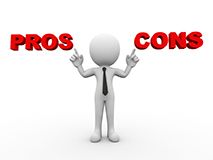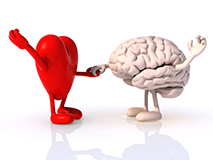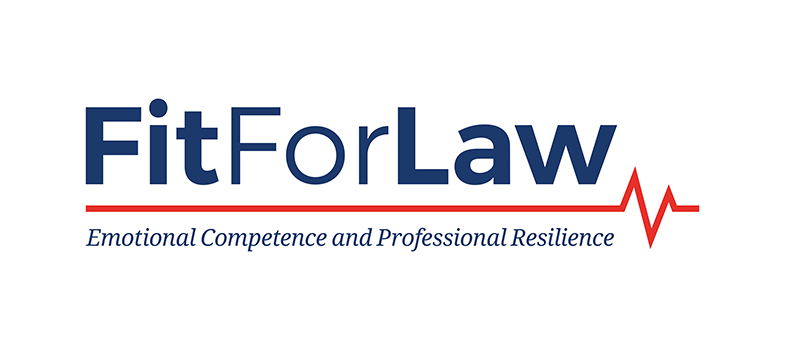2. Exercising your judgement
This section includes:
- Explanatory text
- An information box on “Emotions and decision-making”
- 1 activity on “Identifying the role of emotions in judgement”.
You should allow yourself 30 minutes to complete this section.
As a legal professional, you are likely to have to exercise judgement in a wide range of situations, from selecting which sub-section is most likely to apply in a dispute, to deciding what to wear for an important meeting, to considering how to word a letter of advice to a client. Exercising judgement is also needed in a range of other legal workplace scenarios: From deciding whether to advise a client to issue a claim, to considering whether to run something past a more senior member of staff, to debating when to take your annual leave.
The commonly held view is that because legal practitioners must exercise their judgement in a reasoned and objective way (“thinking like a lawyer”), they must ignore and disregard any forms of emotion as irrational and misleading. This is largely based on a view of emotions as primitive evolutionary throwbacks (sometimes referred to as a “basic emotions” view). This is a popular view in Western societies which effectively views your thinking processes as a form of hierarchy, with emotions at the bottom, needing to be firmly suppressed by the cognitive functions of reason and rationality.
In fact, in recent decades, research in neuroscience and psychology has demonstrated that the relationship between emotions and cognition is much more complex than this, with the two effectively being intertwined (there are several different theories regarding this, but a key one is known as “appraisal theory”). What this means is that we cannot separate out and ignore our emotions as they are an integral part of the way we process information, react to situations and make decisions and judgements. This applies in our working life as well as our personal life.
Neuroscientist, Antonio Damasio (2006) gave a clear illustration of this when he discussed the case of his patient, Elliot, who had brain lesions which left his intellect intact whilst seemingly destroying his capacity to experience complex emotions.
Emotions and decision-making



Activity 1: Identifying the role of emotions in judgement
Part 1
Read the following brief scenario and consider how emotion may play a role within it. You may find it useful to look back at the key emotions interactive to remind yourself of some of the range of emotions that could be present. If you wish to, you can note down your thoughts and save them using the text box below. When you are ready click on “reveal comment” to see the authors’ ideas:
You are one of a team of solicitors preparing for a meeting with a large corporate client where you will advise it on a potential claim against a competitor. The client is keen to add several new particulars to your draft claim form. You feel these are fairly minor amendments and the team quickly agrees to them. However, when about move on, you suddenly have a fleeting feeling that something is not quite right. Although you only pause very briefly, the remainder of the team pick up on this and seem more attentive and serious. A trainee solicitor raises a point about a possible inconsistency in the particulars, which has been discussed previously, but which now leads to others in the team raising similar concerns. You encourage this detailed analysis and it becomes clear that the amendments could potentially have a significant impact on the strength of the claim.
Comment
You may have identified a range of ways in which emotion is involved (supporting our premise that it is part of every situation!). In particular, by pausing before moving on you had identified that you were experiencing a specific emotion and acted on it. You recognised that something was not right. You then discerned that the change in the attitude of the team was due to a potential issue, thus understanding and interpreting the emotion that was present in other team members.
Your pause, and the change in attitude, then led to both you and your team focusing on the issue in a more analytical and searching way – using the emotion you felt to influence and assist your thought processes. You did not ignore the emotion and move on, instead you gave your team time to uncover the issue by integrating emotion into, and regulating, your response in a way which may well prove beneficial to both the team and your client.
In scientific terms, this sort of emotional information is called ‘integral’ emotion. It is relevant information and is integral to the task at hand. It is important because, where it is relevant to the task or situation, there is evidence that attending to our emotions can improve our decision-making and reasoning (Blanchette and Richards, 2010).
In contrast, there are ‘incidental’ emotions which refers to emotions that are not relevant for the task or decision (for example, you are feeling anxious about a result from a medical test) and that can affect your approach to work. In such cases, this emotion is incidental to any tasks at hand, and acting on this emotional information would not improve judgement and decision-making at work and may degrade it.
It is equally important to identify and understand this emotion as irrelevant to the work task to assist you in not allowing it to impact on your judgement and decision-making.
Part 2
Think of a common workplace scenario that has arisen in your own legal practice during the last two weeks. For example, a client interview, a conference, a team meeting, a supervision or appraisal.
Comment
Depending on the scenario you chose, you may have experienced a range of emotions from boredom, frustration and misery to enjoyment, happiness and pleasure. The likelihood is, the more involved you were in the situation, the more intense your emotionsl would have been. The emotions of the other person or persons involved may well have influenced your own emotions too. For example, if someone was feeling very excited about a project you may have picked up on this and begun to feel more positive about it as well. This is sometimes referred to as “emotional contagion” or “mirroring” (Hatfield et al, 2011).
If you found it easy to identify which emotions were present, that’s great (but it’s still worth checking out the next section to make sure you did get the full picture). If you found it difficult, or weren’t sure, that’s not surprising. It is extremely rare for this topic to form part of legal education and training despite its importance in legal practice.
The rest of this section will focus on how to identify and understand the emotions you experience in such scenarios and explore how to incorporate these into your judgements and regulate them appropriately.
1. Introduction
